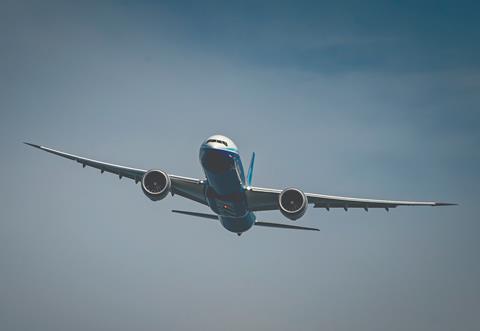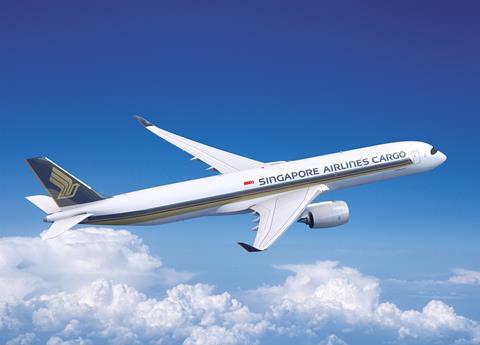Two years ago, the 2020 edition of the Singapore air show offered a glimpse of things to come, as the coronavirus began its mutation from an outbreak confined to China into a global pandemic.
That show was a strange event, with built but unattended stands, few visitors from outside the Asia-Pacific region, and acres of empty tarmac in the static park.

After that point, the world began to shut down as widespread travel restrictions were imposed.
Fast-forward 24 months and the Singapore show was back, showing an industry finding its feet.
Of course, it was smaller than previous editions – not helped by the Omicron variant and a regional airline sector that is lagging behind the pace of recovery of its peers.
No one topic or subject dominated – although advanced air mobility and sustainability came close – in contrast to other similar events.
BIG-TWIN BATTLE
However, the battle of the big-twins continued at Singapore, with Boeing’s 777X and the Airbus A350 both present.
Having made its show debut in Dubai last November, the 777X (N779XW) performed in Singapore’s flying display as Boeing highlighted progress on the GE Aviation GE9X-powered widebody.
Brian Hermesmeyer, senior director of product marketing, says the test programme’s four aircraft have made 650 flights and accumulated 1,900h. That includes a 20h sortie to bring the jet from Seattle to Singapore. “We had 50 people aboard and still had plenty of gas,” he says.
Van Chaney, chief test pilot for the 777/777X, adds: “It has been a really good programme so far. The engines have been wonderful and the systems have been good – usually we spend a lot of time on systems.”
He adds that he had been “expecting trouble” with the jet’s folding wingtips – designed to give the 777X the same gate fit as the 777-300ER – but the new model’s signature feature has been “really good”.
Boeing maintains that the 777-9 is still on track for a first delivery in late 2023. Yet, sales have been slow and certification challenges loom on the heels of the 737 Max saga.
On N779XW’s fuselage eight airline tails signify customers who have committed to the 777X, of whom three are in the Asia-Pacific: All Nippon Airways (ANA), Cathay Pacific and Singapore Airlines (SIA). The carriers account for 72 of the 777-9’s 258 orders.
ANA and SIA are surviving the pandemic, but losses could continue for years. Cathay, meanwhile, is in the throes of an existential crisis.
While Airbus had a passenger A350-1000 flying in Singapore, its big news for the programme was centred on the new freighter variant, with a preliminary agreement from Middle Eastern carrier Etihad Airways for seven A350Fs.
That potentially takes the number of customers for the new aircraft to five – including SIA, which at the show firmed up its December commitment for seven. Total orders and commitments are now 29 units – five shy of Boeing’s total for its newly launched 777-8 Freighter.

Etihad was previously a customer for the A330-200F, ordering and receiving five of the type, before withdrawing them during a fleet overhaul. The aircraft subsequently passed to DHL’s European Air Transport operation.
Etihad Aviation Group chief Tony Douglas describes the A350F – powered by Rolls-Royce Trent XWB engines – as a “remarkable aircraft”.
The carrier’s passenger fleet includes five A350-1000s, on which the A350F has been largely based.
Etihad still has 15 A350-1000s on order, but it is unclear whether the freighters will be additional or converted from this backlog. US lessor Air Lease, a launch customer for the A350F, cut back its own commitment to the passenger A350 after firming its freighter order.
Douglas says: “As our cargo operations continue to over-perform, and we work towards a more sustainable future built upon the world’s youngest and most fuel-efficient fleet, the addition of the A350F will play a key role in driving our long-term cargo strategy.”


























